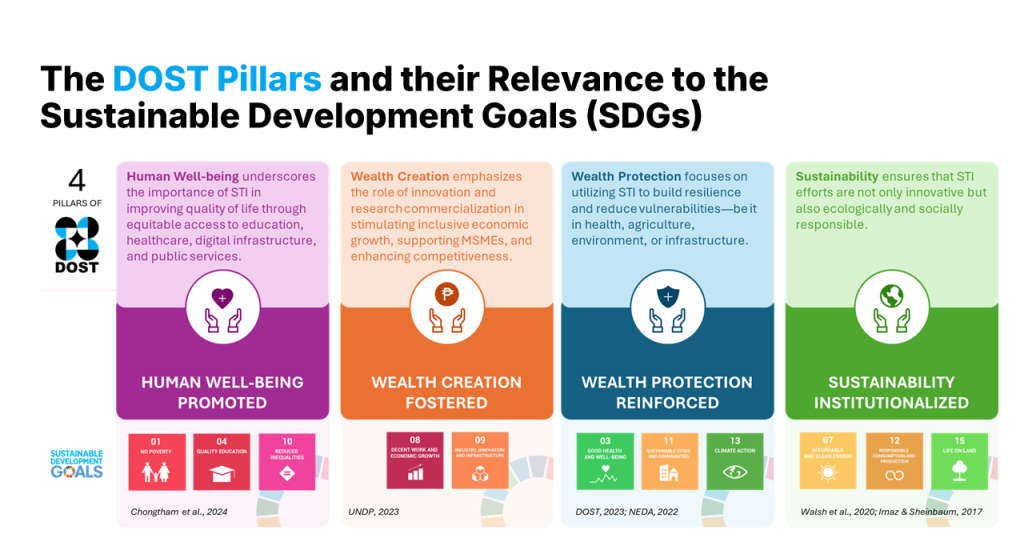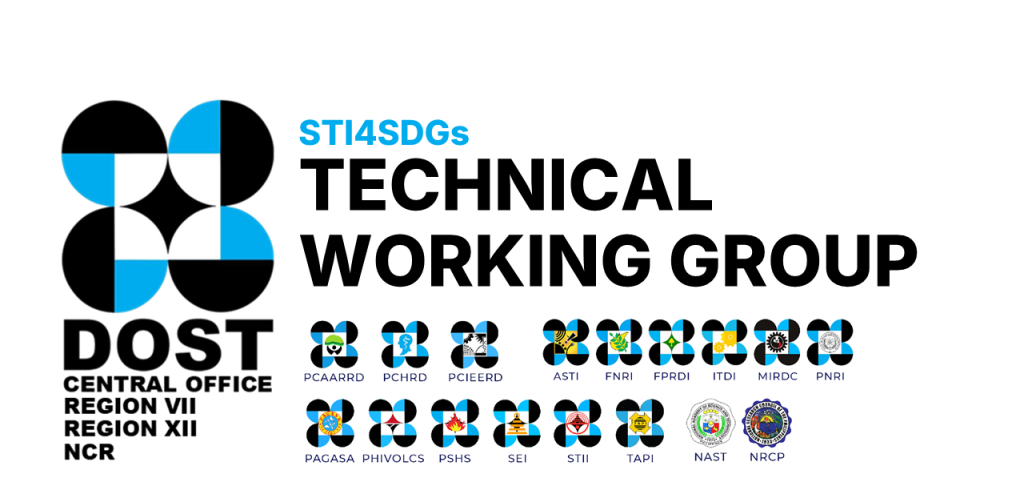About
Accelerating Science, Technology, and Innovation (STI) for Sustainable Development Goals (SDGs) for the Philippines
In 2015, the United Nations (UN) member states adopted a global plan of action entitled, “Transforming Our World: The 2030 Agenda for Sustainable Development” to end all forms of poverty, fight inequalities, protect the planet, and ensure that by 2030 everyone would live in peace and prosperity. At least 193 countries, including the Philippines, have committed to prioritizing the progress of 17 Sustainable Development Goals (SDGs) which are expected to be used to frame country agendas and policies until 2030. A Subcommittee on the Sustainable Development Goals (SC-SDGs), with the National Economic Development Authority (NEDA) as chair and various national government agencies as members, oversees and supports the implementation of the SDGs in the Philippines. An SDG Secretariat, housed at NEDA, coordinates the country’s efforts in the realization of the SDGs.
The Philippines has endeavored to deepen the ownership of the 2030 Agenda through a Whole-of-Nation approach, wherein the SDGs are integrated into all the agencies of government (Whole-of-Government approach) and sectors of society (Whole-of-Society approach). SDGs are integrated into the country’s long-term vision, called AmBisyon Natin 2040 (AN 2040), which guides the country’s medium-term development plan, the Philippine Development Plan (PDP) and have been cascaded to the subnational level through the Regional Development Plans (RDPs). Aside from the country’s policy and planning structures, the SDGs have also been integrated in the legislature both in the Senate and the Congress through the creation of the Committee on SDGs, Innovations, and Futures Thinking and the standing Committee on SDGs, respectively.
Emerging from the pandemic and at the midpoint of the 2030 Agenda, the Sustainable Report 2023 highlighted that all of the SDGs are seriously off track globally. From 2015 to 2019, the world made some progress on the SDGs, although this was already vastly insufficient to achieve the goals. Since the outbreak of the pandemic in 2020 and other simultaneous crises, SDG progress has stalled globally.
While the COVID-19 pandemic interrupted the progress and reversed some of the Philippines’ gains in the SDG outcomes, the country remains committed to “leave no one behind,” even in the midst of the health crisis. The principles of the 2030 Agenda guided the country’s response such as in mitigating the impact of the pandemic and in updating the PDP. The 2022 Philippine Voluntary National Review is aptly titled “Rekindling Commitment and Using Innovation to Accelerate Recovery and Ensure Progress to Achieve the SDGs in 2030 and our AmBisyon Natin 2040.” The country’s commitment to AmBisyon Natin 2040 and the 2030 Agenda remains, even with the election of a new administration in 2022, as evidenced by their integration in the PDP 2023-2028. To get the SDG agenda back on track in the post-pandemic era, the Philippines must come up with a strategy to rekindle commitment and accelerate progress especially in the most pressing and impactful areas. According to the latest report of the Philippine Statistics Authority, the Philippines is at various rates of progress in meeting its targets. The Philippine SDG indicators include 97 targets and 155 indicators. Of the indicators with measurable pace of progress (65 out of 155), 16.9% are on track, 47.7% need acceleration to achieve the target, and 35.4% are regressing. The need to accelerate progress towards the achievement of the SDG commitments is glaring from these statistics.
Rationale
As pointed out in the analyses conducted by the United Nations and other international organizations, we cannot catch up by doing “business as usual”. One of the lessons we can glean from the pandemic is the critical role of Science, Technology and Innovation (STI) in sustainability and resiliency. It has long been agreed that STI is key in the achievement of the SDGs as it feeds into the economic, social and environmental components of sustainability. In fact, more than 20 commitments for STI are included in the Addis Ababa Action Agenda and were reaffirmed by the UN General Assembly in its resolution (UN Res. 76/213) on 17 December 2021 titled “Science, technology and innovation for sustainable development.” Furthermore, the 2030 Agenda formally agrees STI as a means or end to 12 out of the 17 goals and 26 out of the 169 targets and is highlighted explicitly in 22 targets. More broadly, the SDGs are recognized as contributory to every Goal, whether directly or indirectly. Science, Technology, and Innovation is also recognized as a key driver in the achievement of the country’s socioeconomic development goals in the Philippine Development Plan. It is reflected as a key strategy, i.e., Chapter 8 – Advancing Research and Development, Technology, and Innovation (Chapter 8), and as a component of many of the other strategies, e.g., Boost Health (Subchapter 2.1), Establish Livable Communities (Subchapter 2.3), Ensure Food Security and Proper Nutrition (Subchapter 3.1), Modernize Agriculture and Agri-business (Chapter 5), Revitalize Industry (Chapter 6), and Reinvigorate Services (Chapter 7), of the PDP 2023-2028. In the President’s State of the Nation Address on 24 July 2023, he underscored the importance of STI in addressing the pressing national issues such as food and nutrition security, water resource management, and disaster and climate change resilience and in achieving socio economic recovery and progress.
STI for SDGs Roadmap
STI roadmaps and action plans to help realize the SDGs have been among the central topics in the Annual Multi-Stakeholder Forum for Science, Technology, and Innovation (STI Forum). While STI policy roadmaps have been developed in the past and used in diverse ways ranging from support of strategic stakeholder alignment to program implementation, these have not been directed specifically toward the SDGs (M. Miedzinski et al., 2022). In the Philippines, S&T-related roadmaps abound, and with varying scopes. For instance, the Department of Science and Technology Councils has developed industry-specific roadmaps compiled under the Harmonized National R&D Agenda. However, their alignment to the SDGs has not been explicit and there is much room for improvement in intensifying and focusing efforts for maximum impact.
For instance, the Department of Science and Technology (DOST) and its attached agencies contribute to the monitoring of only eight indicators for three SDGs (2, 3, 9) (Annex 1). Seven of these indicators are provided by one DOST-attached agency – the Food and Nutrition Research Institute (FNRI) and track the health and nutrition status of Filipinos. It should be noted that these indicators do not refer to STI interventions. Only one indicator (9.5.1 R&D expenditure as a proportion of GDP) directly pertains to efforts related to STI. It is also interesting to note that out of the twenty-two SDG targets with STI explicitly stated, the Philippines has only adopted nine (Annex 2). However, a deeper look at the indicators reveals that only 3 indicators can be traced as STI interventions – one of which is R&D expenditure (9.5.1) while the other two are official development assistance/official international support.
There is tremendous potential as well as urgency to maximize leveraging STI to achieve the SDGs. To exploit this potential, we need to reflect on our current state, determine our shared vision, and identify our priorities so that we can develop a strategy, align our efforts, build our capacities, and focus our resources. Cognizant of this need, the Global Pilot Programme on STI for SDGs Roadmaps was launched at the High-Level Political Forum in 2019.
What is STI4SDGs?
STI4SDGs is a set forward-looking policy framework, actional plan and/or strategy, to continuously guide effective actions that utilize STI to achieve the SDGs with a country-wide scope, including at national and subnational levels, also with implications at the international level.
Project Components
- Define the objectives and scope of the STI4SDGs roadmap
- Assess the current situation and how the STI initiatives in the country contribute to the realization of the SDGs
- Identify key focus areas within SDGs where STI can make the most significant impact on sustainable development, considering the local context and specific challenges faced by the Philippines
- Develop vision, goals, and targets of the STI for SDGs roadmap
- Develop and assess alternative pathways towards leveraging STI for SDGs for the identified focus areas
- Develop a detailed STI for SDGs roadmap that to leverage STI to address the identified focus areas
- Develop robust monitoring, evaluation, accountability, and learning (MEAL) framework, plan, and platform to track progress, identify challenges, and refine strategies accordingly
Methodology
Guided by the Guidebook for the Preparation of STI for SDGs Roadmaps prepared by the UN Inter-agency Task Team and multiple stakeholders, this provides a framework, a common language, and step-by-step advice to facilitate the development of STI for SDGs roadmaps for practical policymaking and effective communication.
Expected outputs
PUBLICATION
- Comprehensive STI4SDGs roadmap document outlining the strategic priorities and action plans.
- Implementation Guidelines and Operation Note to assist relevant stakeholders in implementing the STI4SDGs Roadmap
- Communication materials to facilitate dissemination and promote stakeholder engagements
- Administrative Orders, Joint Administrative Orders, Executive Orders
POLICY
- Policy documents (policy advisory, policy briefs, white papers
- Recommendations to LGUs, NEDA, PSA, and other NGAs
PLACES AND PARTNERSHIPS
- Partnership with NGA, Private Sector, Stakeholders
PRODUCT
- Monitoring, Evaluation, Accountability, and Learning (MEAL) Framework
- MEAL Plan and MEAL PlatforM
PEOPLE SERVICES
- Dissemination of roadmap through meeting with stakeholders


